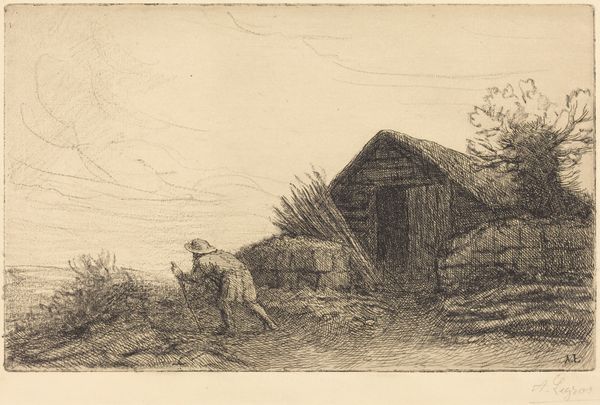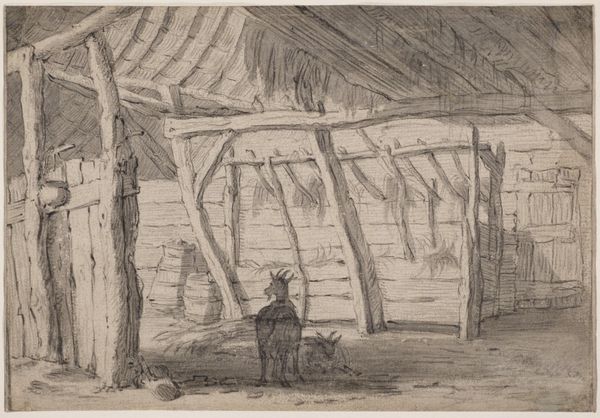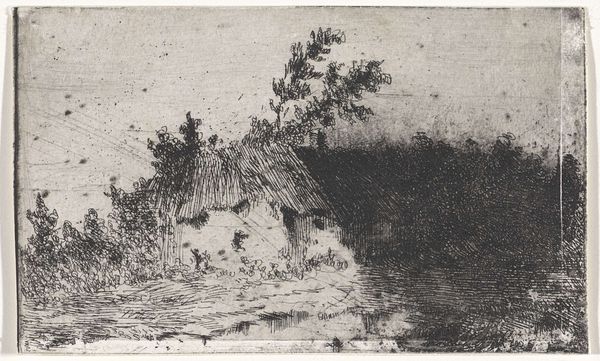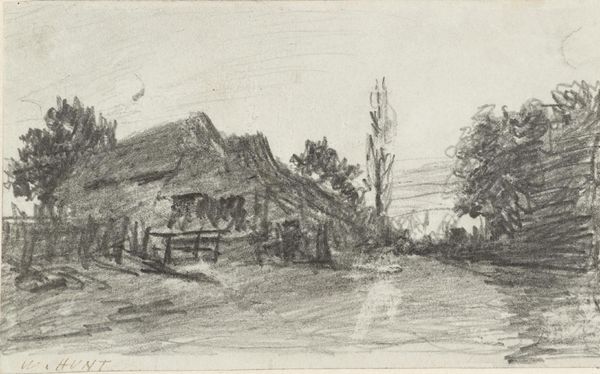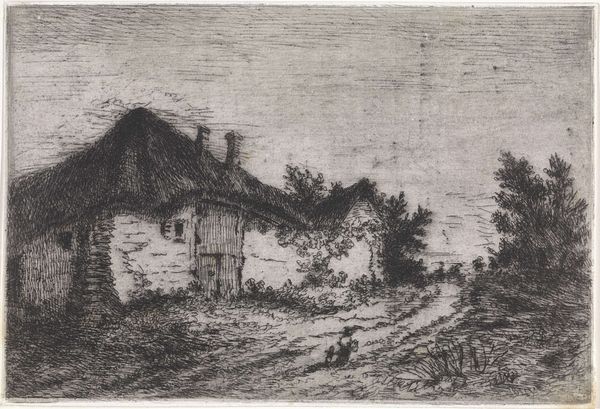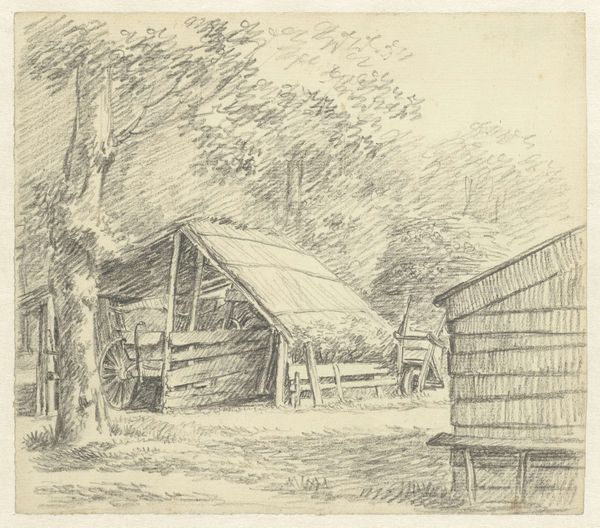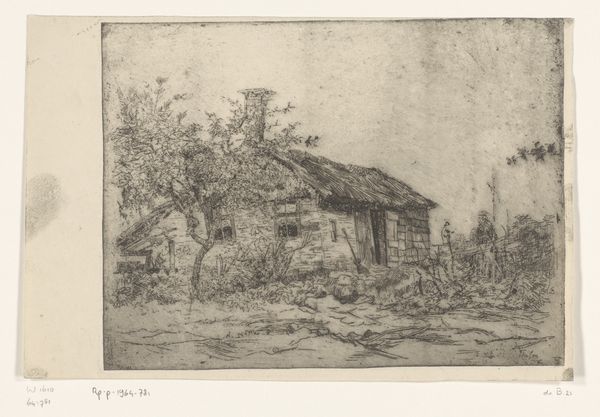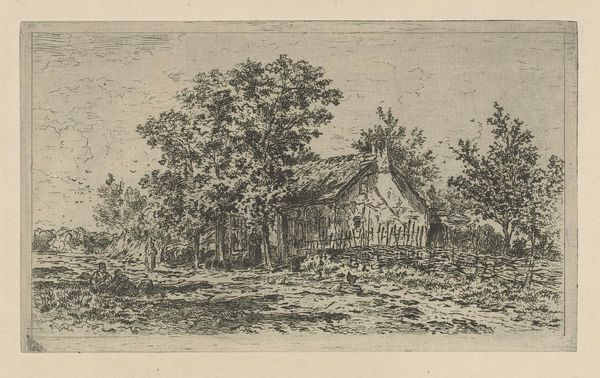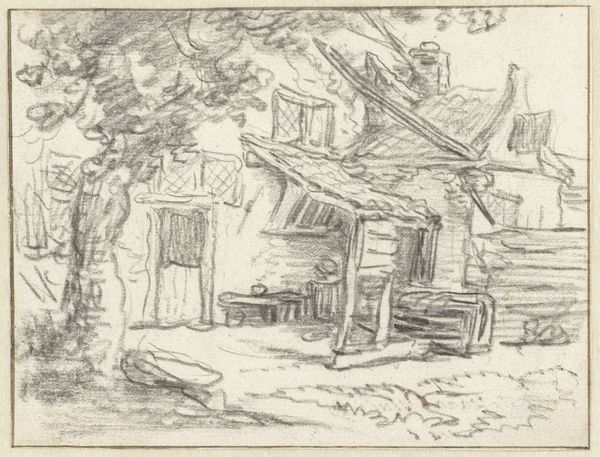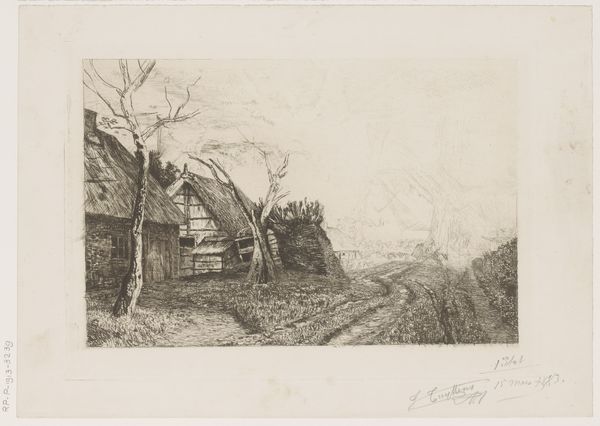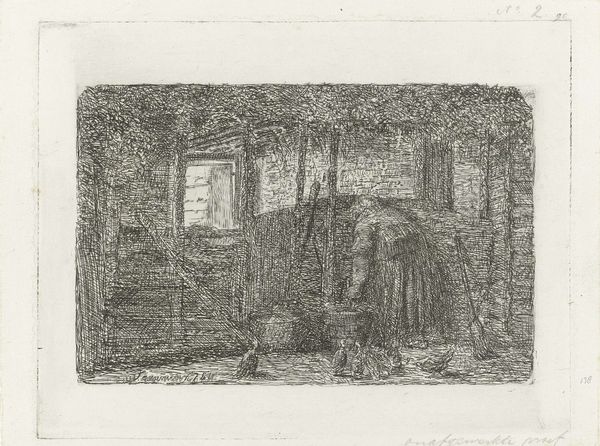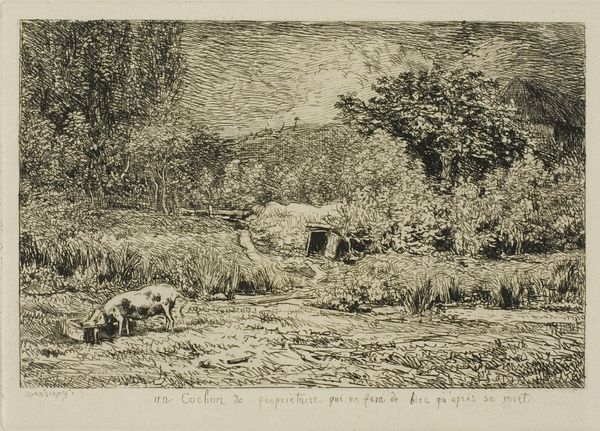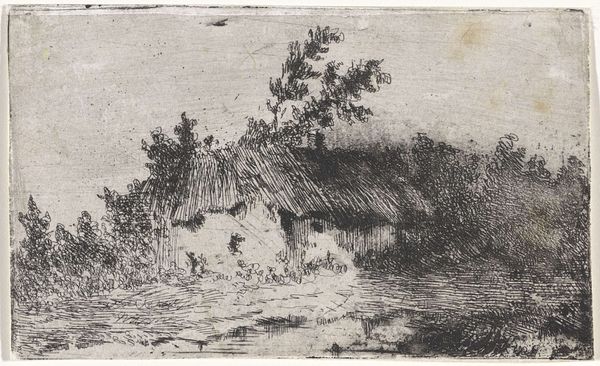
print, etching
#
pen and ink
# print
#
etching
#
landscape
#
folk-art
#
realism
Dimensions: image: 176 x 227 mm sheet: 274 x 346 mm
Copyright: National Gallery of Art: CC0 1.0
Editor: So here we have Alice Edith Rumph’s "Carolina Negro Cabin," an etching made sometime between 1900 and 1978. It's a striking image, the density of the linework is quite powerful and moody. I am wondering, from your perspective, what's especially noteworthy about it? Curator: The artist's choice of printmaking—specifically etching, with its laborious process—is vital here. Each line requires deliberate action, resisting spontaneous gesture and the implications of using etching to represent a “Negro Cabin.” What are the implications, for Rumph and her viewers, of using such a time-consuming, classically “fine art” technique to depict such a subject? Editor: That's interesting, I hadn't considered the implications of the *method* so closely. Does it risk romanticizing the subject, or perhaps, elevate it? Curator: It's a compelling tension, isn't it? Consider the consumption of this image: Who was buying and displaying such a work? Was it intended to provoke empathy, or perpetuate stereotypes about labor and living? And what did they think of the representation and use of black labor at that time? The print as a multiple also brings questions about accessibility and intended audience. Editor: I see your point. It raises questions about the ethics of representation, doesn’t it? Curator: Exactly! The act of creating, distributing, and consuming the image becomes intertwined with power dynamics and prevailing attitudes about race, class, and the rural South. And if this was not a single artwork, but rather one of an edition, what do you make of that as related to consumption? Editor: Fascinating. I'll definitely be looking at art through the lens of material conditions and labor practices now! Thanks! Curator: My pleasure. Remember to ask those crucial “how” and “why” questions, always pushing beneath the surface.
Comments
No comments
Be the first to comment and join the conversation on the ultimate creative platform.
